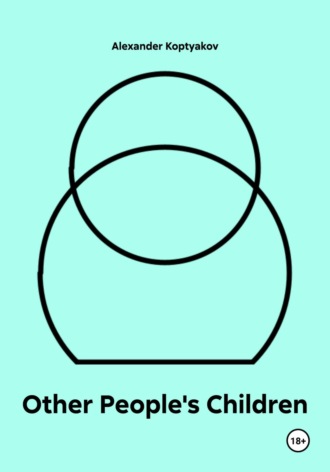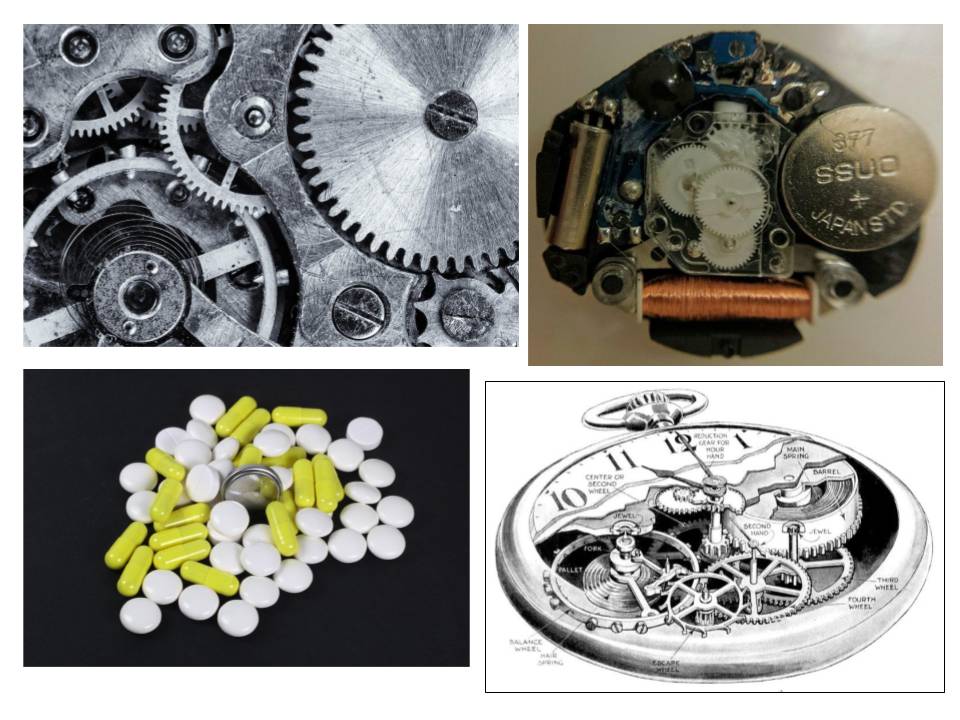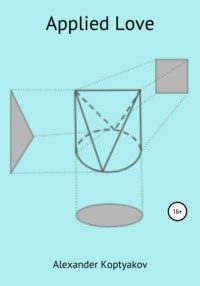
Полная версия
Other People's Children
Writer: Have you tried singing in a choir? When you hear a song for the first time, you can’t sing along at all, you just listen. Then you start to be able to sing along with the endings of the verses. Then you can sing the whole song, but every time you sing in a choir – you sing and listen carefully so as not to fall out of the choir. Con-cert. Con-tact… You know what depresses me in all of this… Where is the free will of the drummer? He can, through continuous perfection, bring his performance to the highest mastery and learn to hit the drum with such precision in timing and quality as no one before or after him. But even in this mastery, he remains a slave to the notes written by someone else…
Consultant: But written nonetheless! Sergei Vasilyevich Rachmaninoff, for example, was a pianist, a conductor, and a Russian composer! By the way, speaking of concerts, experience, and psychology. His first written concerto had an unsuccessful premiere. The composer fell into depression, composed almost nothing. Only after hypnosis sessions with the then-famous psychotherapist Nikolai Vladimirovich Dahl was the creative crisis overcome, and in 1901 Rachmaninoff wrote Piano Concerto No. 2, which is still in the repertoire of practically all pianists in the world. There was a second creative crisis, which many associate with his forced departure from Russia in 1918. A world-famous Russian composer who longed for his homeland. During the Great Patriotic War, he gave several concerts in the USA, anonymously sending all the proceeds to the Red Army fund and advising all Russian émigrés to also contribute. He transferred the proceeds from one of his concerts to the USSR Defense Fund with the words:
Sergei Rachmaninoff: “From one of many Russians, all possible aid to the Russian people in their struggle against the enemy. I want to believe, I believe in complete victory.“
Engineer: Now, 80 years later, in 2024, these words resonate in rhythm once again… Another cycle of experience.
Writer: See you again, my friends!
04 Neurology
Engineer: I wanted to talk to you again today about the human nervous system, nerves, and the connections they form. But I can’t help but digress to the amazing connections that people themselves form! Did you know that Sergei Rachmaninoff invested $5,000 (a huge sum at the time) in a technology company and was its vice president? This company was called “Sikorsky Aero Engineering Corporation,“ and its president was Igor Ivanovich Sikorsky – a Russian and American aircraft designer, inventor of the world’s first four-engine airplanes “Russky Vityaz“ and “Ilya Muromets,“ and the world’s first mass-produced helicopter. Igor Sikorsky, like Sergei Rachmaninoff, was born in the Russian Empire, in the city of Kyiv. And they met in the USA in 1923.
Writer: The relics of Ilya Muromets rest in Kyiv, in the Kyiv-Pechersk Lavra.
Engineer: Yes, I saw them personally when we were in the Lavra caves. And my grandmother is from Kyiv, although then the empire was called the USSR. And two of my grandfathers were military aviation engineers. And my father, in general, is a fighter pilot. Maybe that’s why I remembered Sikorsky?
Consultant: Whatever thread you pull, that’s the tangle that will unravel. You were going to talk about the nervous system. Could I ask you to try to unravel this tangle not from inputs to outputs, but the other way around: from behavior to perception? With a focus not from the outside in, but from the inside out.
Writer: If an egg is broken from the outside, life ends. If an egg is broken from the inside, life begins!
Engineer: I’ll try. We’ve already talked about different behaviors depending on the situation. Imagine this: a small child is brought to a neurologist for the first time. The doctor takes his little hammer, approaches the unsuspecting child sitting on a chair, and hits him on the knee with the hammer. The leg jerks, everything is fine – the knee-jerk reflex has been checked. But the second time, the picture will be completely different! It seems like the same doctor, the same hammer, and the same child. But the child is no longer sitting quietly on the chair, but, upon seeing the hammer, tries to hide behind a parent and not let the doctor near. Different behavior! What has changed? The child has changed, or rather – his attitude to the situation has changed, because he remembered how unpleasant it was the previous time. And now behavior is determined not only by the neurons involved in the knee-jerk reflex, but also by other neurons in which the situation and past experience of interaction were remembered. At the same time, it must be understood that even the second time (if the child is held down) the leg will jerk when hit with the hammer. If a child (and an adult too) is sleeping, the knee-jerk reflex will also work perfectly. Here it is important to highlight two sources of preparation and initiation of behavior: unconscious and conscious. The child did not learn the knee-jerk reflex but inherited it from his parents. But this is very simple, one-step innate behavior, and one should not think that all others are just as simple. Take breathing, for example.
Pyotr Anokhin: “First of all, it must be noted that the formation of a complex of effector excitations in the motor part of the respiratory center is the result of the synthesis of many diverse afferentations coming to it. The respiratory center receives afferentation from the lungs, airways, for example, the trachea. It also receives humoral excitation from the level of partial pressure of CO2 and O2 in the blood. <…> As we have seen, the respiratory center sends to the respiratory muscles such a quantity of excitations that precisely corresponds to the integration of all afferent excitations that have reached it, i.e., it accurately reflects the body’s need for a certain volume of air (K.D. Gruzdev). And this, in turn, means that the alveoli expand in full accordance with the volume of contraction of the respiratory muscles, and, consequently, the respiratory center must receive from the lung, i.e., from the results of this inhalation, such feedback afferentation that is quantitatively precisely correlated with the efferent excitations sent by the respiratory center itself to the periphery, to the respiratory muscles. This closes the circle of the self-regulating respiratory system.“
Engineer: And do you know what is most amazing about this whole complex of neurons in the respiratory system? At the moment of a child’s birth, it is fully formed, but it only starts working at the very moment of birth, with the first baby cry! That is, the child in the womb already “knows“ how to breathe, but only gets the first experience with the first inhale and first exhale.
Sean Gaffney: “Changes are long in the making but happen quickly.“
Consultant: On the one hand, breathing seems more complex than the knee-jerk reflex, but on the other hand, it’s quite similar: I breathe unconsciously, but consciously I can hold my breath or start breathing faster. The muscles are the same, but the commands come from different centers from two different sides.
Writer: Allow me to burst into your fascinating dialogue with my metaphor! You constantly mention “centers.“ What if we imagine any such center as a city center? Cars drive to the city center, then they drive away from the center. In the city center is “kilometer zero.“ This means that when you are driving on a road and see a post with a blue sign and a number, it is a “kilometer marker.“ It indicates how many kilometers are left to the city center. And on the other side, it will also indicate how many kilometers you have traveled from your starting point, which may be the destination for cars moving towards you. I’m not sure if distances in the psyche can be measured in kilometers, but you can substitute the number of neurons on the path for kilometers.
Engineer: Roads with cars, or canals with ships – that’s more about the circulatory system. Neurons send and receive signals.
Pyotr Anokhin: “Consequently, the very fact of the appearance of “signaling“ and “temporal connections“ can be recognized as one of the most ancient regularities in the development of living matter. It is in this sense that one should understand I. P. Pavlov’s expression “temporal connections are a universal phenomenon of nature.“ <…> Therefore, naturally, we must ask ourselves: what characteristic of the conditioned reflex is most typical for it, defining it? Of all its possible qualities, the quality of “anticipation,“ or “signaling“ about upcoming events in the external world (“anticipatory activity,“ according to I. P. Pavlov) is its most decisive quality. Neither variability, nor strength, nor acquiredness, etc., can compare in purpose with this biological quality of it. Precisely because animals have the opportunity to prepare by signal for the still upcoming links of sequentially developing events, it has become the central point of progressive evolution. And its discovery is the greatest merit of our teacher I. P. Pavlov.“
Engineer: Imagine that one neuron is a signal tower. There are twenty such watchtowers in the Moscow Kremlin, each of which is for signaling (sensory (afferent) neurons) and for repelling external attacks (motor (efferent) neurons). But a watchtower does not work by itself; there must be a watchman on each tower.

Engineer: So, a signal tower plus a signalman on it is one neuron. Now imagine that there are 100 billion such neurons in the nervous system! That’s how many neurons a newborn child has, or as many people as have ever lived on Earth (if, of course, scientists are not lying – in both the first and second cases). 100 billion signal towers, located over a large territory, some of which are built into the “fortress walls“ of a person, but most of them inside transmit signals to each other: to the centers, from the centers. And on each signal tower – a signalman and a signal fire. The fire, or smoke from the fire, is “visible“ from a great distance both day and night. I put “visible“ in quotation marks, as a universal way of receiving a signal. Because there are sensory neurons of the sense organs that see, hear, smell, touch, taste. But then they give a signal, and other neurons in the chain “see“ this signal.

Engineer: Let’s consider one neuron (one of 100 billion) as such a signal tower. How can we reason about this?
–
a signal tower needs a constantly replenished supply of firewood (or oil) to light a signal fire;
–
one tower can only give one signal, but this tower can “see“ signals from many other towers;
–
there are towers that look outward (sensory neurons), and there are towers that look at other towers (interneurons, transmitting neurons);
–
there are towers that light a fire, not for a signal, but to boil tar and pour it on the enemy’s head outside the walls (motor neurons);
–
there are central towers that make final decisions (neurons of “kilometer zero“);
–
on each tower, the fire is managed by a signalman who remembers everything, learns all his life, and decides when exactly to light his fire, depending on the behavior of other signal towers in his line of sight;
–
if there is heavy fog, the signal may not be visible (for example, a pain signal does not reach the brain during opioid intoxication)
–
and so on… But some of the most interesting towers are those that can launch a “rainbow“! Of course, in the real world, there were no such towers. But in our world of neural towers, there are endocrine towers that, through glands, launch rainbows (hormones) into the sky: “happiness“ hormones (serotonin, dopamine, endorphin, oxytocin, …), “fear“ hormones (cortisol, adrenaline, norepinephrine), and so on, depending on the situation. Different hormones – different rainbows (the stripes alternate differently, like on national flags). And why rainbows, you ask? It’s very simple – there are billions of signal towers, and if it is necessary to notify a large number of them simultaneously about some important situation (to mobilize or give a signal to remember the current situation), then the most effective way is to launch a rainbow into the sky that many will see (release hormones into the bloodstream).

Consultant: So, in the case of the boy at the neurologist’s, one signal tower lights up from the hammer blow, another watchtower sees this signal and immediately extends the muscle. Meanwhile, these lights are visible on other towers, which transmit the signal inwards. And somewhere these signals meet with signals that came from the optic nerves and were transformed into a picture of “a man in a white coat with a hammer.“ They meet and combine into one situation. A rainbow is launched, the situation is remembered by many neurons for the future.
Writer: Just some fiery waves, going from the periphery to the center and back, if you look at this whole multi-billion tower system from above!
Engineer: And if identical waves from the “signal towers of the left ear“ arrive a little earlier than the same waves from the “signal towers of the right ear,“ then the towers of the auditory center will calculate the direction from which the sound is coming.
Writer: Or on the central auditory towers, they will “suddenly“ pay attention to the rhythmically lighting up and going out lights – the ticking of a wall clock. Although they were ticking all the time, the signalmen were busy analyzing brighter lights from other towers.
Engineer: Of course, this is all a metaphor. But it’s a metaphor that allows us to make hypotheses that can then be experimentally tested. Although now, with modern equipment, scientists and doctors can “look“ into the nervous system and see how millions of neurons light up and go out, how waves of excitation roll through the layers of the psyche in different directions. Can you imagine how difficult it was to “look“ into the nervous system in ancient times? Only 150-100 years ago, our great physiologists: Ivan Mikhailovich Sechenov, Ivan Petrovich Pavlov, Alexei Alexeyevich Ukhtomsky – studied the nervous system in spinal frogs, in which, for physiological research, the connection of the spinal cord with the brain was severed by a transverse transection. Such a frog lay very calmly, and the reflex activity of vertebrate animals could be studied on it. Pavlov’s genius was that he began to study the behavior of dogs that had not undergone such an operation, and thus to observe the entire nervous system as a whole! Nikolai Alexandrovich Bernstein studied man and his psyche through movements and dexterity, Lev Semyonovich Vygotsky looked into human thinking through speech, Alexander Romanovich Luria also studied the connection between consciousness and language, Leontiev Alexei Nikolaevich connected activity, consciousness, and personality.
Pyotr Anokhin: “The work of our laboratory, carried out over the past 10 years, gives us more and more reason to think that the functional systems of the body are formed on the basis of two factors that are different in nature – architectural and energetic. Both these principles of the central nervous system’s operation are organically combined in the formation of a wide variety of functional systems with different final adaptive effects. <…> From the enormous variety of innate and life-experience-created functional systems of the body, which constitute its primary value, the energy factor helps “bring to the stage“ precisely this, and not another, activity. In these complex relationships, the initiative role in when and which functional system to “release onto the stage“ undoubtedly remains with the cerebral cortex, where afferent synthesis takes place. <…> Now it is required to understand: by what mechanisms this increased food excitability turns into a “drive requiring satisfaction.“ By what mechanisms does this drive form the goal of a certain behavior and the realization of this goal in specific behavioral acts? We must also understand the physiological mechanisms of the formation of what I. P. Pavlov called “basic drives.“ It is impossible not to recognize as a huge shortcoming of our work that this main driver, the impetus for purposeful actions, remains outside the field of our research interests. Such a phenomenon can only be explained by the fact that I. P. Pavlov boldly posed the question of the reflex of the goal when the physiology of the nervous system as a whole was not yet ready for its resolution. We did not know, for example, on the basis of what specific physiological processes a person’s life goal is maintained at a high energy level for a long time, absorbing, and often subordinating, all his other activities. At present, we know this physiological basis. It has a universal activating effect on the higher levels of the nervous system and can energetically support ever wider associative connections. As is now known, the substrate of this “blind force,“ in the words of I. P. Pavlov, is located in the hypothalamus and reticular formation of the brainstem (Magoun and Moruzzi 1942, Bremer 1953, et al.). Thus, the purely energetic side of the long-term maintenance of a once-set goal of action in a dominant state currently has a fairly convincing explanation. At this point, the problem of the reflex of the goal is very closely related to the problem of the dominant, developed in our domestic physiology by A. A. Ukhtomsky.“
Engineer: We’ve talked a lot about energy factors today, I suggest we discuss architectural factors next time.
Consultant: Agreed.
Writer: See you again, my friends!
05 Architecture
Engineer: So, let’s smoothly transition from discussing energy factors to considering architectural factors. Smoothly, because before we start discussing the architecture of the human nervous system, I wanted to tell you an interesting fact from the world of technology, related to both energy and architectural factors. We’ll be talking about the watch battery. This miniature power element, resembling a button or a pill, can now be found not only in wristwatches but everywhere: in toys, musical books and cards, remote controls, trinkets, and even in shoes that light up when you walk :) But initially, such batteries were used specifically in wristwatches, which determined their flat cylindrical shape. Why isn’t the shape square, or triangular, but specifically round? This is due to the architecture of wristwatches. In classic pocket watches, which are already 250 years old, and which at the end of the 19th century migrated from the pocket to the arm of a soldier, there are only three main interconnected systems:
1. Energy source
2. Oscillating system (balance wheel)
3. A system of gears connecting the first system to the second (with hour, minute, and sometimes second hands on the gears).
So, initially, the energy source in wearable watches was a wound spring, rotating a drum with small teeth, into which it was placed. A feature of such watches is that they need to be wound regularly (compressing the spring), otherwise the watch stops. So, they came up with the idea of replacing the spring with a battery. And since all the other systems of the watch remained architecturally in their places, the battery had to be made in such a shape and size that it would fit in place of the flat cylinder with the spring.

Writer: And did you know that “spring“ (the mechanism) and “spring“ (the season) are written and read the same way in English? There’s something to that. The spring in a watch, like spring in the year, is a source of stored and unfolding energy.
Engineer: Let’s take a step from technology to humans. But first, another digression necessary to clarify the concepts of “boundary“, “internal“, and “external“ in relation to living beings. We discussed the “pill“ battery, and now imagine a real pill. Ascorbic acid, for example. Imagine that you are holding it tightly in your hand. From your point of view, is the pill inside you or outside?
Consultant: Outside.
Engineer: Now, mentally put the pill in your mouth. And now?
Consultant: Well, it seems to be inside now. Although, to be sure, I would swallow it.
Engineer: Swallow it!
Consultant: Done! Swallowed it. Now the pill is definitely inside.
Engineer: Yes and no. A human, like many other animals, such as a worm, is a tube. And the pill, having been swallowed, simply began a journey from the entrance to the exit :) The pill is designed so that it will, of course, dissolve and be absorbed by the body. But if it were a raw bean seed, it would most likely survive. Even more so – it would defend itself: beans contain phytic acid in their shell, which is not digested or absorbed by the body. Moreover, it blocks the absorption of magnesium, calcium, iron, and zinc in the intestines, and also interferes with the absorption of fats and proteins by blocking digestive enzymes in the stomach.
Writer: But on the other hand, thanks to all of the above, some gourmets can afford to enjoy the most expensive coffee in the world, kopi luwak :)
Engineer: I brought up this example to show that “internal“ and “external“ may not be as obvious as they seem at first glance, and that inside a person there are also boundaries with the external world. So, let’s return to the human nervous system. To its architecture. I have a hypothesis, the assessment of which by a strict reader may vary from “nonsense“ or “everyone has known this for a long time“ to “this is a Nobel Prize!“
Firstly, it is already clear that all neurons can be divided architecturally into at least two levels in the human psyche:
1. The area of preparation and implementation of human behavior;
2. The area of receiving and storing knowledge about the surrounding Genesis and about oneself.
The first area includes nerve complexes whose neurons send signals to muscles and glands (outputs). The second area includes all sensory organs, whose neurons are located on the border between humans and Genesis (inputs).
Consultant: A joke. The Gestapo blocked all the exits, but Stierlitz left through the entrance…
Writer: :)
Engineer: So, I propose to identify a third area in the human psyche, by dividing the second area into two parts. The third area will include the deep layers of the psyche that have no direct connection with the external world. Imagine the area of receiving and storing knowledge about the surrounding Genesis and about oneself as an egg.

Engineer: The egg white perceives the external world. It “feels“ light, heat. And through the layers of egg white, light and heat reach the yolk. The yolk, it turns out, also “feels“ the external world, but the paradox is that the external world for the yolk is the egg white… And the paradox of paradoxes is that we can also assert that the yolk, in turn, is the external world for the egg white!

Engineer: So, we get a three-part architecture of the human psyche:
1. Area No. 1 – preparation and implementation of human behavior;





